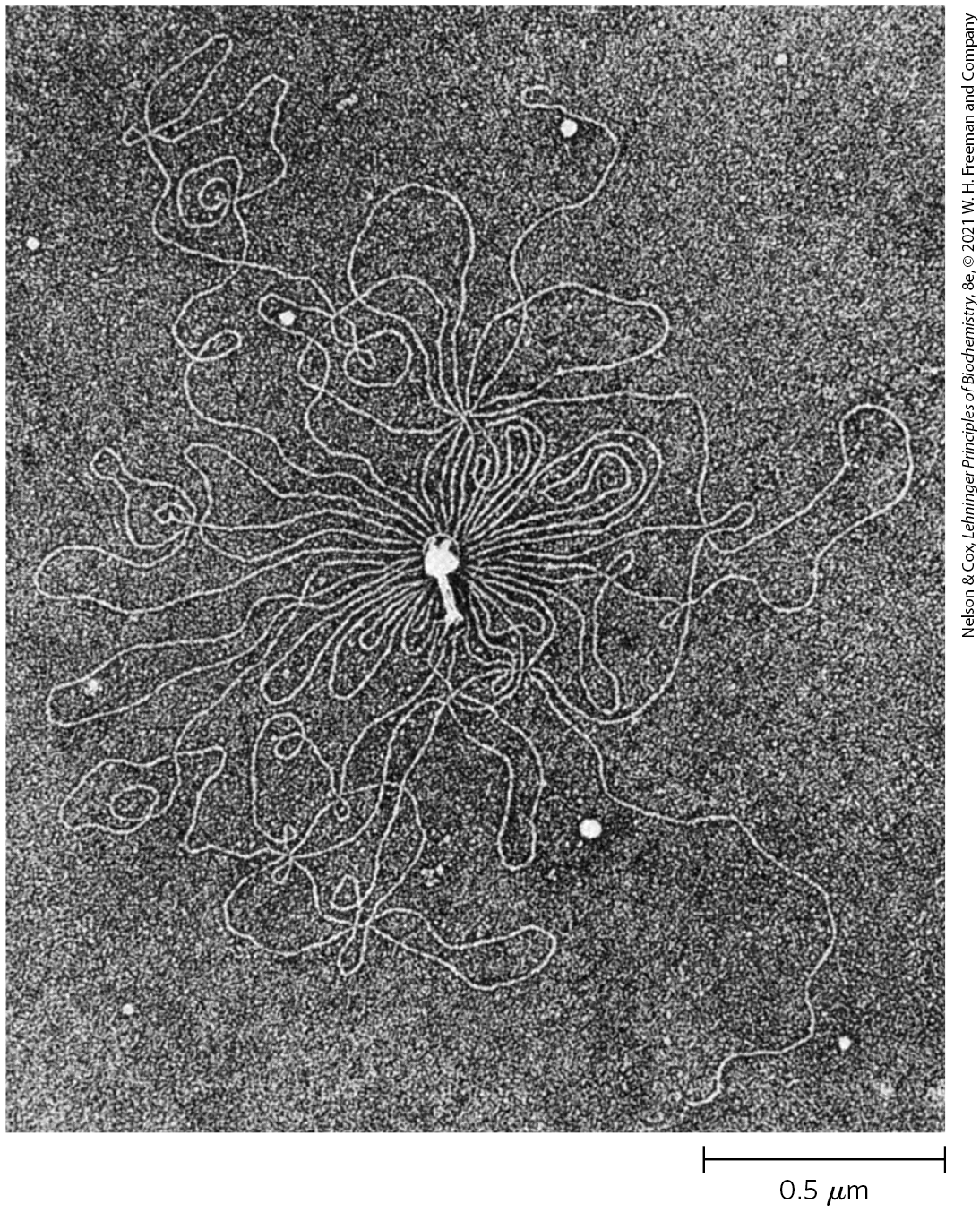Chapter 24 GENES AND CHROMOSOMES

DNA molecules are typically the largest macromolecules in any cell, often many orders of magnitude longer than the cells or viral particles that contain them (Fig. 24-1). The extraordinary degree of organization required for the tertiary packaging of DNA into chromosomes — the repositories of genetic information, is the focus of this chapter. It also gives rise to the principles around which the chapter is organized:
Chromosomes include dedicated sequences that ensure their replication, transcription, packaging, and transmission from one generation to the next. They are more than a long stretch of protein-encoding genes.
Chromosomes are large. To constrain them in a small space can require multiple layers and multiple modes of tertiary structure.
Chromosomes in all cells are maintained in a state of torsional stress. DNA is underwound relative to the stable B-form structure, facilitating both the packaging of DNA and access to the genetic information contained within it.
Specialized proteins and RNAs maintain chromosome structure. Topoisomerases control DNA underwinding. Histones, condensins, cohesins, and other DNA-binding proteins provide scaffolds to organize chromosome structure. Certain long, noncoding RNAs also play important roles in chromosome structure and function.

FIGURE 24-1 Bacteriophage T2 protein coat surrounded by its single, linear molecule of DNA. The DNA was released by lysing the bacteriophage particle in distilled water and allowing the DNA to spread on the water surface. An undamaged T2 bacteriophage particle consists of a head structure that tapers to a tail by which the bacteriophage attaches itself to the outer surface of a bacterial cell. All the DNA shown in this electron micrograph is normally packaged inside the phage head. [Republished with permission of Elsevier, from A. K. Kleinschmidt et al. (1962), “Preparation and length measurements of the total deoxyribonucleic acid content of T2 bacteriophages,” Biochim. Biophys. Acta 61:857–864; permission conveyed through Copyright Clearance Center, Inc.]
The chapter begins with an examination of the elements that make up viral and cellular chromosomes, and then considers chromosomal size and organization. We then discuss DNA topology, describing the coiling and supercoiling of DNA molecules. Finally, we consider the protein-DNA interactions that organize chromosomes into compact structures.
 Chromosomes include dedicated sequences that ensure their replication, transcription, packaging, and transmission from one generation to the next. They are more than a long stretch of protein-encoding genes.
Chromosomes include dedicated sequences that ensure their replication, transcription, packaging, and transmission from one generation to the next. They are more than a long stretch of protein-encoding genes. Chromosomes are large. To constrain them in a small space can require multiple layers and multiple modes of tertiary structure.
Chromosomes are large. To constrain them in a small space can require multiple layers and multiple modes of tertiary structure. Chromosomes in all cells are maintained in a state of torsional stress. DNA is underwound relative to the stable B-form structure, facilitating both the packaging of DNA and access to the genetic information contained within it.
Chromosomes in all cells are maintained in a state of torsional stress. DNA is underwound relative to the stable B-form structure, facilitating both the packaging of DNA and access to the genetic information contained within it. Specialized proteins and RNAs maintain chromosome structure. Topoisomerases control DNA underwinding. Histones, condensins, cohesins, and other DNA-binding proteins provide scaffolds to organize chromosome structure. Certain long, noncoding RNAs also play important roles in chromosome structure and function.
Specialized proteins and RNAs maintain chromosome structure. Topoisomerases control DNA underwinding. Histones, condensins, cohesins, and other DNA-binding proteins provide scaffolds to organize chromosome structure. Certain long, noncoding RNAs also play important roles in chromosome structure and function.